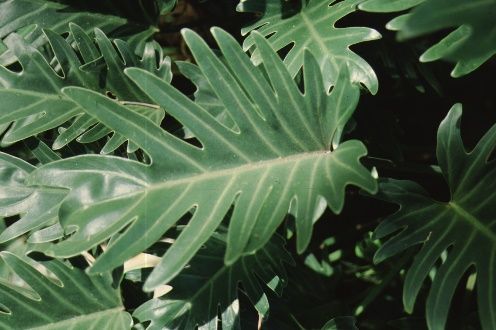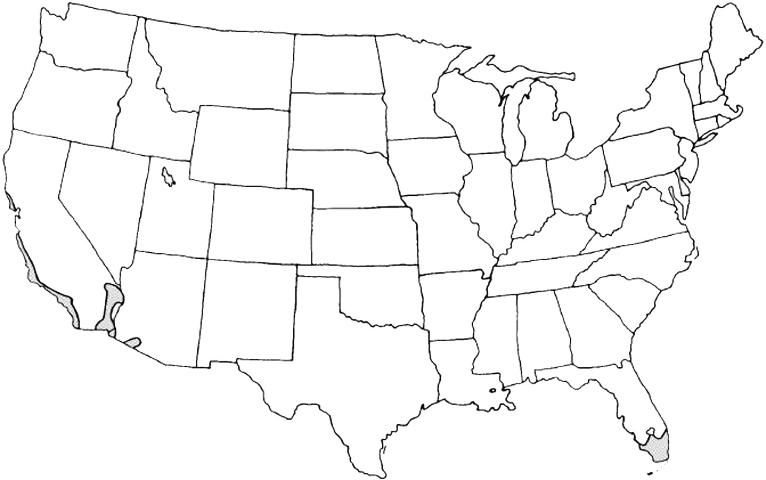Introduction
This moderately large-leaved, easily grown philodendron makes a dramatic, tropical statement wherever it is used in the landscape. The deeply divided, usually drooping, dark grey-green leaves grow up to 18 inches long and 8 to 12 inches wide, appearing on long, smooth petioles. Each leaf is divided into 15 to 20 lobes. It can be grown outside only in south Florida and in the warmest parts of central Florida. The flower is not showy.

Credit: Edward F. Gilman, UF/IFAS

Credit: Edward F. Gilman, UF/IFAS
General Information
Scientific name: Philodendron x 'Xanadu'
Pronunciation: fill-loe-DEN-drun
Common name(s): 'Xanadu' philodendron
Family: Araceae
Plant type: perennial; shrub
USDA hardiness zones: 10 through 11 (Figure 3)
Planting month for zone 10 and 11: year round
Origin: not native to North America
Invasive potential: not known to be invasive
Uses: foundation; border; mass planting; suitable for growing indoors
Availability: generally available in many areas within its hardiness range

Credit:
Description
Height: 2 to 4 feet
Spread: 4 to 6 feet
Plant habit: round
Plant density: open
Growth rate: fast
Texture: coarse
Foliage
Leaf arrangement: alternate
Leaf type: simple
Leaf margin: lobed
Leaf shape: elliptic (oval)
Leaf venation: pinnate
Leaf type and persistence: evergreen
Leaf blade length: 12 to 18 inches
Leaf color: green
Fall color: no fall color change
Fall characteristic: not showy
Flower
Flower color: green
Flower characteristic: flowers periodically throughout the year
Fruit
Fruit shape: no fruit
Fruit length: no fruit
Fruit cover: no fruit
Fruit color: no fruit
Fruit characteristic: no fruit
Trunk and Branches
Trunk/bark/branches: not particularly showy; usually with one stem/trunk
Current year stem/twig color: green
Current year stem/twig thickness: very thick
Culture
Light requirement: plant grows in the shade
Soil tolerances: occasionally wet; acidic; slightly alkaline; sand; loam; clay
Drought tolerance: moderate
Soil salt tolerances: poor
Plant spacing: 36 to 60 inches
Other
Roots: usually not a problem
Winter interest: no special winter interest
Outstanding plant: not particularly outstanding
Pest resistance: long-term health usually not affected by pests
Use and Management
When given enough room to spread, 'Xanadu' makes a handsome foundation or specimen planting, and can also be used in large containers, where it looks especially attractive at poolside. It has similarities in texture and form to selloum without its large size. Space 4 or 6 feet apart in a landscape to form a mass planting of coarse textured foliage. Since leaves remain close to the ground, it makes a nice, tall ground cover for any shaded, damp location.
'Xanadu' is well adapted to the shade of tall trees. It needs fairly rich, moisture-retentive soil to look its best. Most philodendrons adapt to alkaline soil fairly well and are resistant to drought.
Pests and Diseases
Infrequent pests include mites and scale.